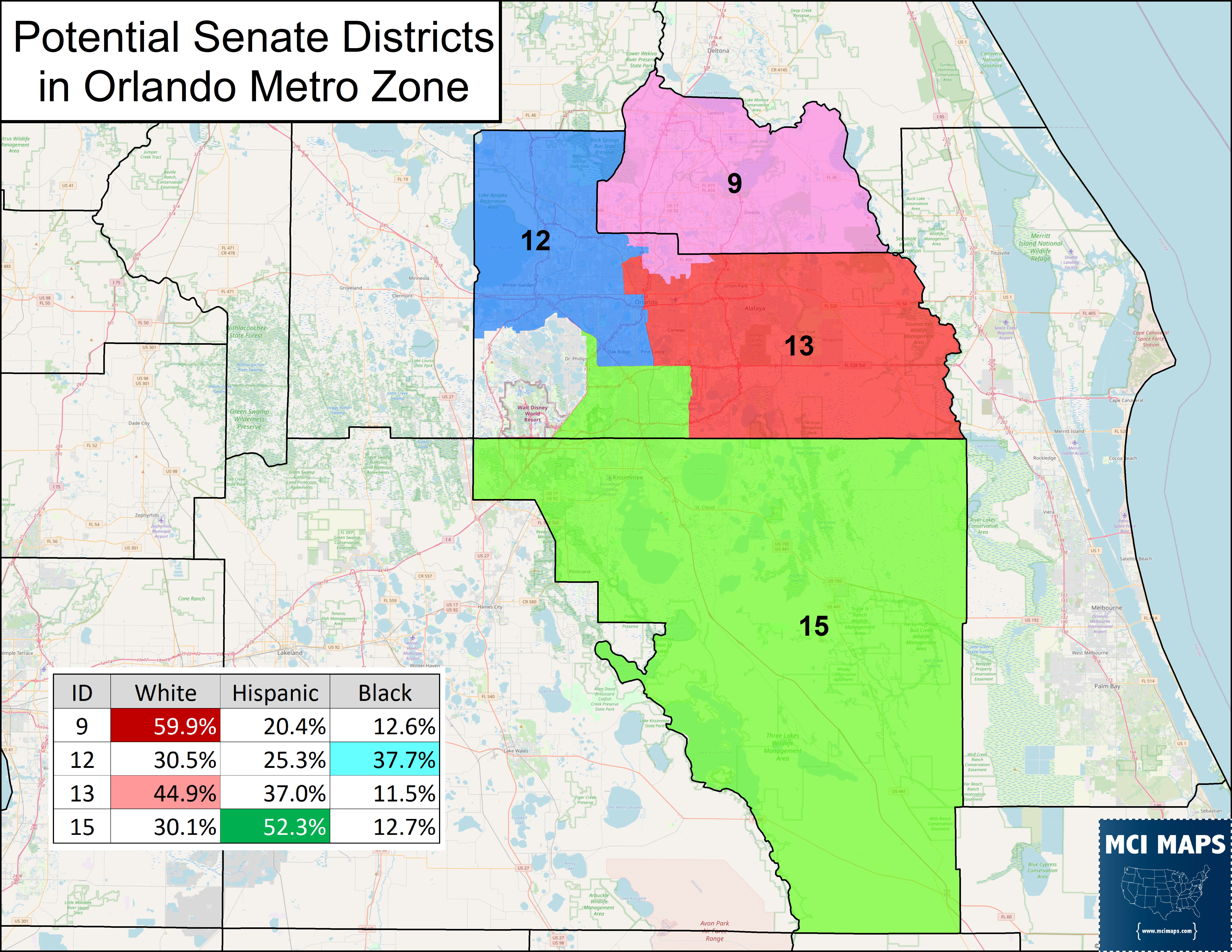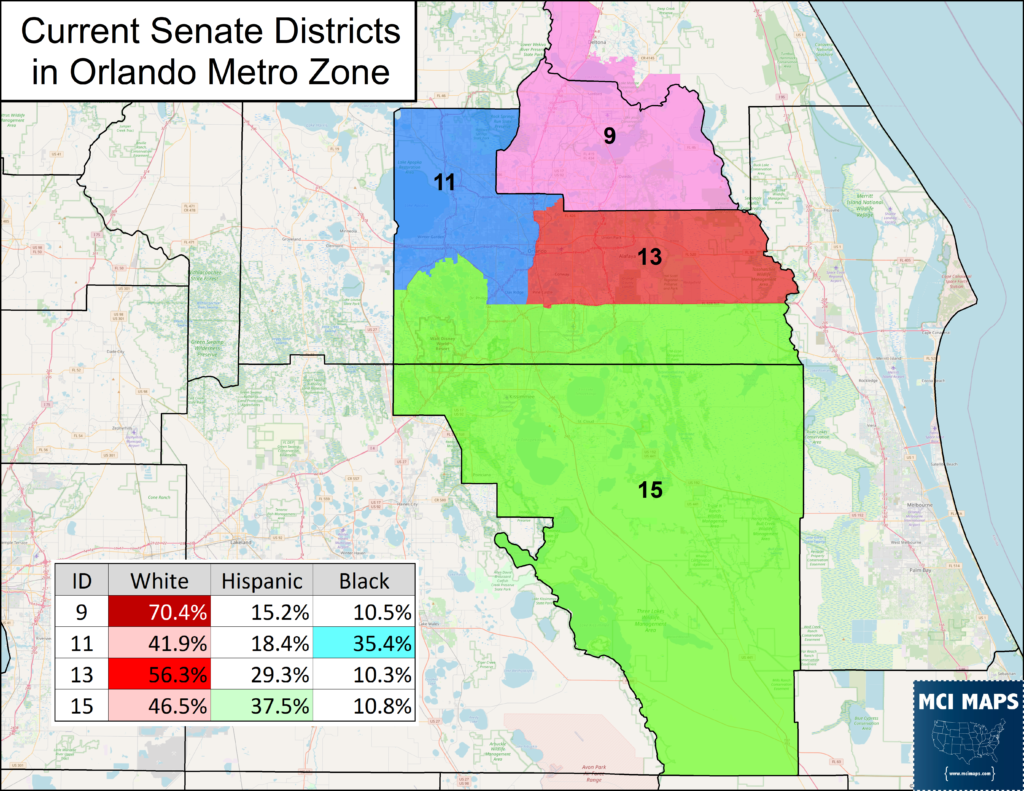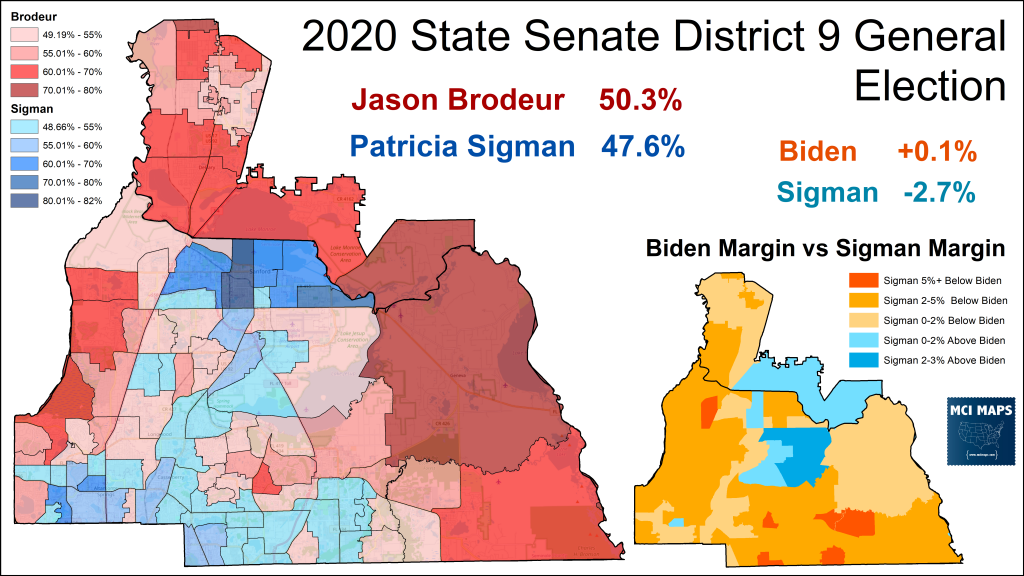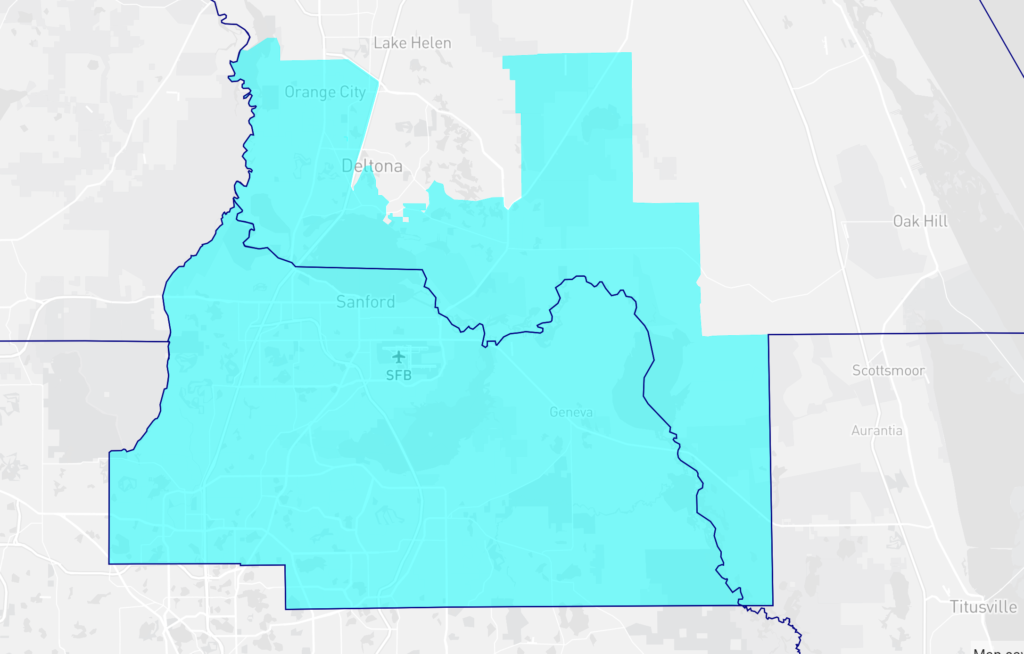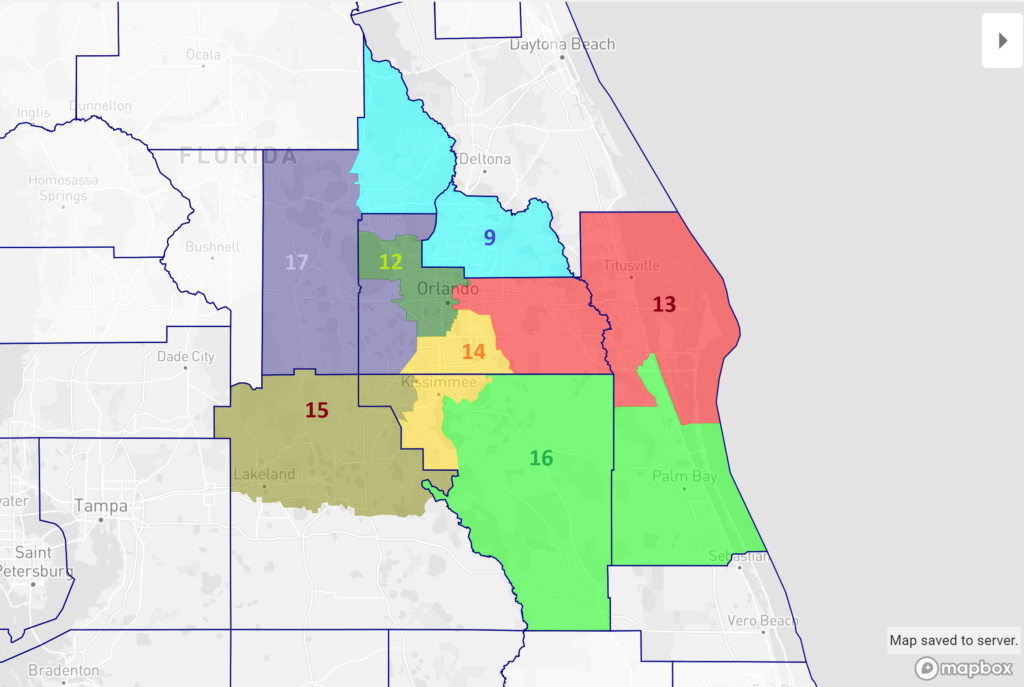This week marks article #3 in my series on redistricting possibilities across Florida. Each week I will look at an area of Florida and hypothesize how the maps may turn out.
Series Explainer
The goal of this series is to take a look at different areas in Florida and see how the legislative lines may end up. These articles will focus on how lawmakers may draw districts to accommodate changing populations. I will talk about different areas, what mandates (namely minority representation) they have, and what might need to happen due to population changes. I will also, at times, examine what efforts to gerrymander a region will look like. After the 2012 gerrymandering was discovered by a Florida Court, I believe it is appropriate to treat legislative intent with some healthy skepticism. “Fair maps” can – at times – be in the eye of the beholder, but the goal will be to identify what would likely be partisan decisions by lawmakers.
I highly recommending reading my History of Florida Redistricting series – as many mandates and norms we have in our maps are a product of that history. Prerequisite reading is absolutely my 2022 Primer Article – which covers which districts are under-populated and what the racial benchmarks are.
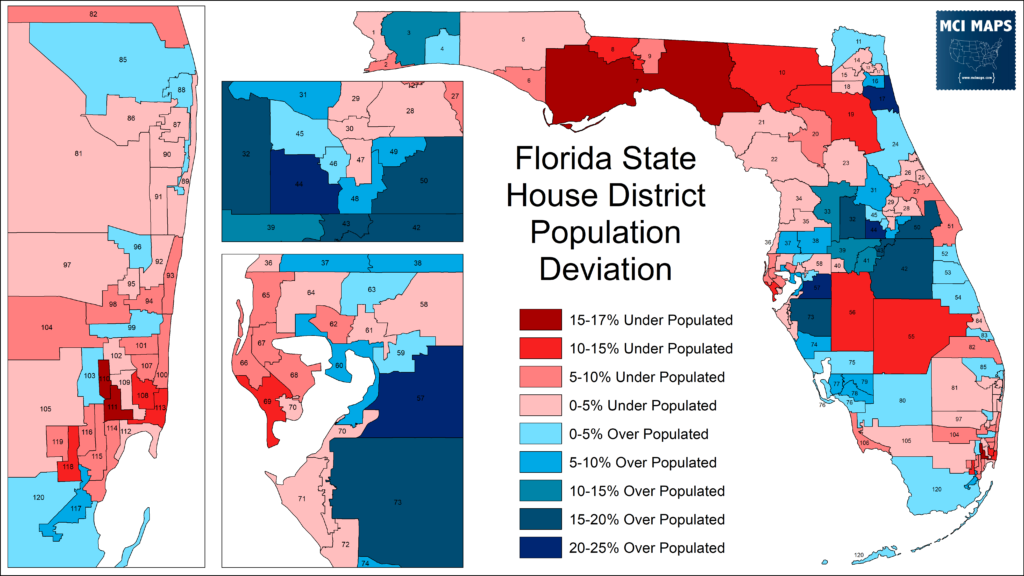
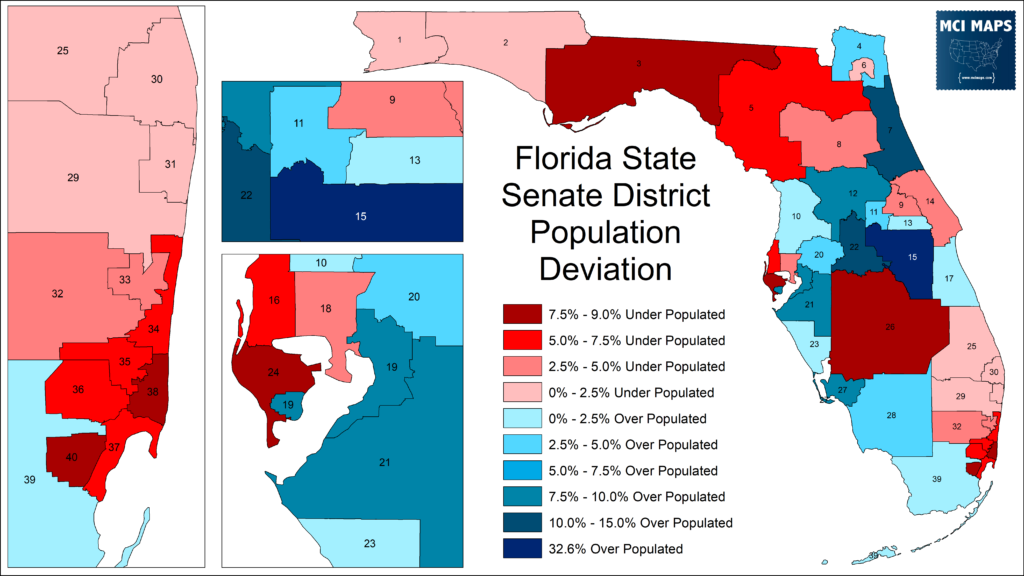
The full spreadsheet of district stats – including population and racial makeup – can be found here.
An important glossary to remember:
- BVAP = Black Voting-Age population
- HVAP = Hispanic Voting-Age Population
- Functional Analysis = using political turnout data to confirm minority performance in a district. Utilizing both general election and primary election performance for parties and racial groups.
Lets begin this series by looking at Orlando’s metro state senate!
Orange State Senate
This article will focus on the metro Orlando area state senate map. This will broadly look at the counties of Seminole, Orange, and Osceola – counties all part of the infamous I-4 corridor. For a political background on the I-4, read this article I wrote in 2020.
Population Changes
The Orlando metro zone, and the I-4 broadly, have been the home to massive population gains. Osceola’s 44% population increase is the largest in the state.
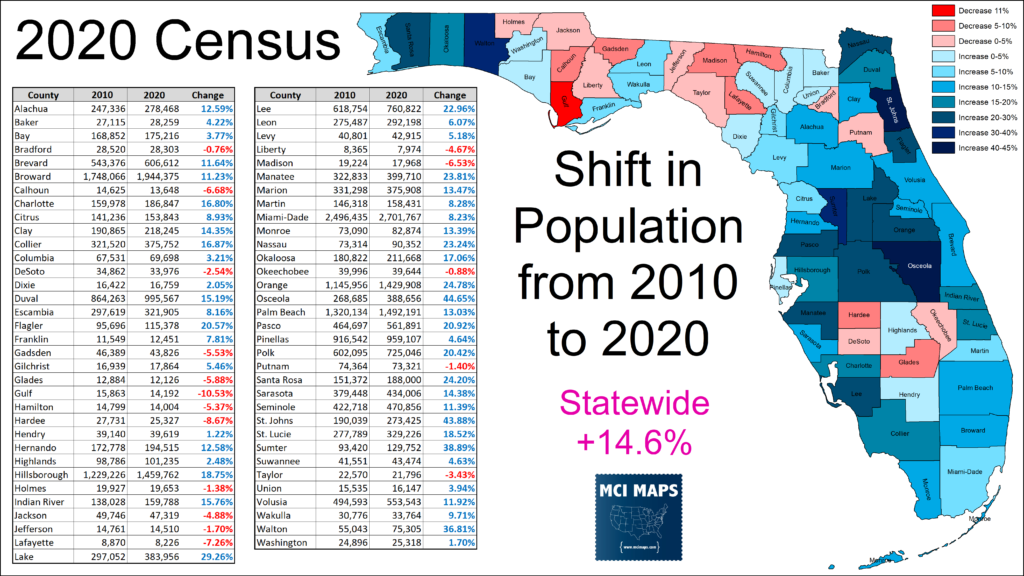
With the large population growth has come increased racial diversity. In the Orlando metro zone, the population is no longer majority white. Hispanic residents have gone from 25% to 32% of the population.
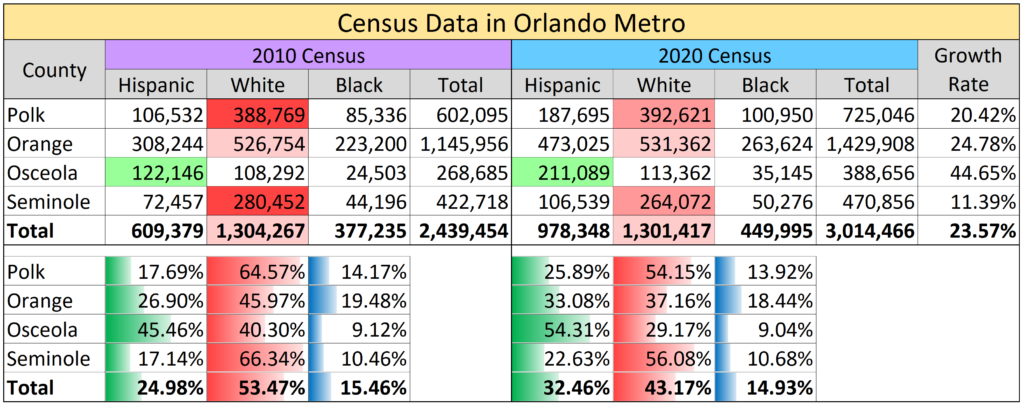
Hispanic growth in the region has already been seen at the voter registration level. A corridor of Hispanic, largely Puerto Rican, voters exists along the Orlando to Kissimmee region.
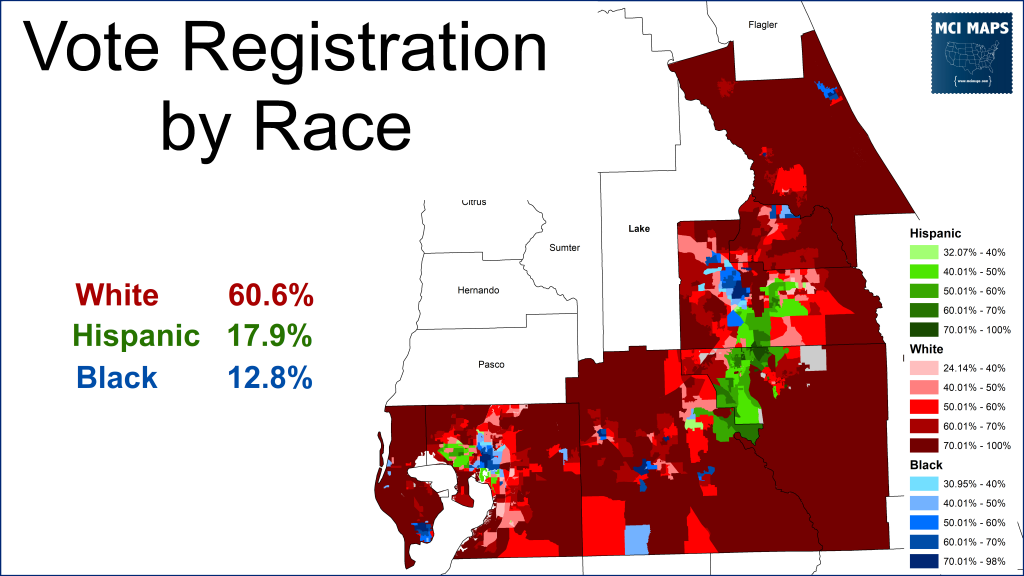
The growth in population and Hispanic population means that the state senate districts in this region saw an increase in their Hispanic makeup. The 2010-2020 population data shows that SD15 is now plurality Hispanic – and can be easily redrawn to become majority-Hispanic. While SD9, 11, and 13 are all in the general population deviation range that would be acceptable; only over-under populated by a modest amount – SD15 is a staggering 33% over-populated. By far the most over-populated senate district in the state.

With this growth, it is now possible to hold over four state senate districts just within Orange, Seminole, and Osceola.
Obviously how districts line up with county borders can alter their numbers – but the data shows a region that is going to have more districts within or overlapping with its borders.
In 2015, the senate redraw results in districts 11, 13, and 15 nestled entirely within the Orange/Osceola borders.
If map-makers opt to try for continuing this trend of an Orlando-metro-centric “sandbox” (as they called it) – remains to be seen.
Possible Fair Map – The Orlando-metro Sandbox
Thanks to population growth, you can fit more than three senate districts inside Orange and Osceola. I wanted to create a plan that still respects the idea of an Orlando metro “sandbox” – while also respecting the racial demographics of the region. My top proposal is seen below.
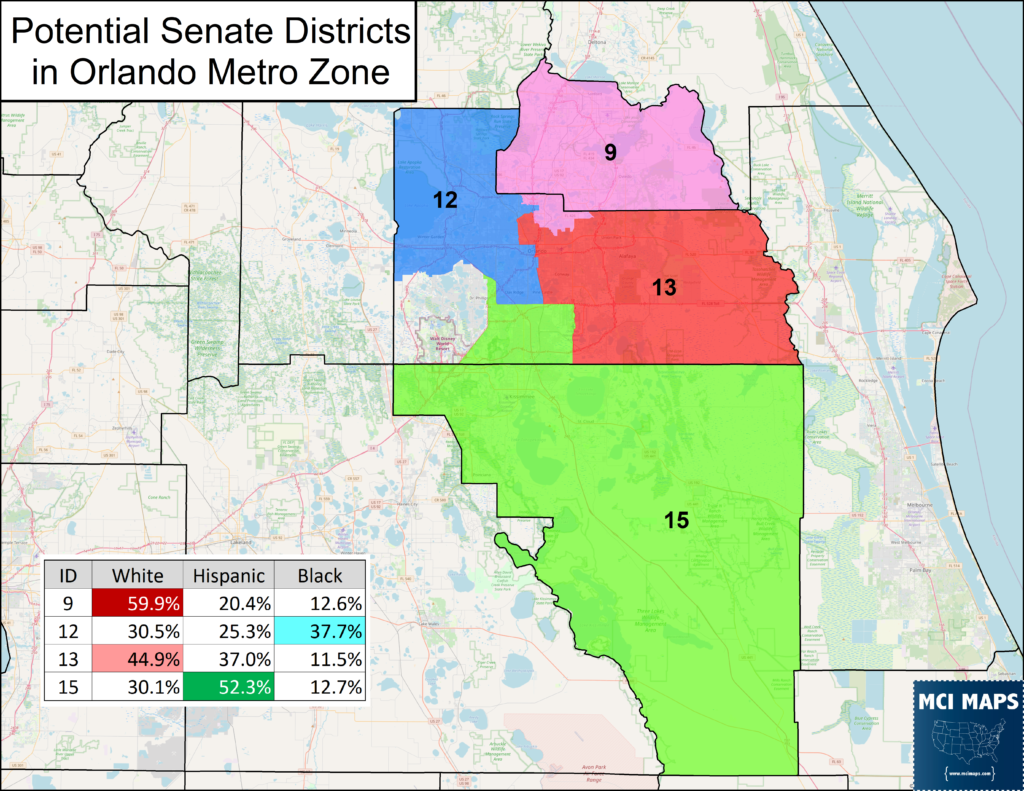
This plan largely retains the broad structure of the 2015 plan.
- SD15 is based on Osceola and just a bit of Orange. It is easy to draw as majority-Hispanic.
- SD13 continues to be based out of eastern Orange – and is rapidly growing in Hispanic makeup
- SD12 remains a functionally African-American seat in the NW end of the county. Plurality black but over 60% so in a democratic primary
- SD9 keeps all of Seminole and diverts down into Orange county – similar to Congressional district 7.
Even with SD9 going to Orange, instead of Volusia, there is still population left over. In my proposal, I have the SW suburbs going into what would likely be a Lake-centric district.
Unfortunately for Senator Victor Torres, he will no longer get to say he represents Disney World. Granted I have no idea if he’s every said that – but wouldn’t you??
Another Hispanic Senate District?
In my Orlando House article, I talked about how the growth in the region’s Hispanic population meant that the area would likely get two additional Hispanic-majority house districts. What about the state senate?
The trick for senate districts is that their size means there is not enough Hispanic voters to create two majority-Hispanic seats. It would be possible to create a new Hispanic-plurality district, however. This plan makes SD13 a 44% Hispanic seat by focusing it along the Hispanic corridor that goes along the middle of Orange county. SD15, meanwhile, can limit its incursion into Orange, and grabs Hispanic voters in Polk County.
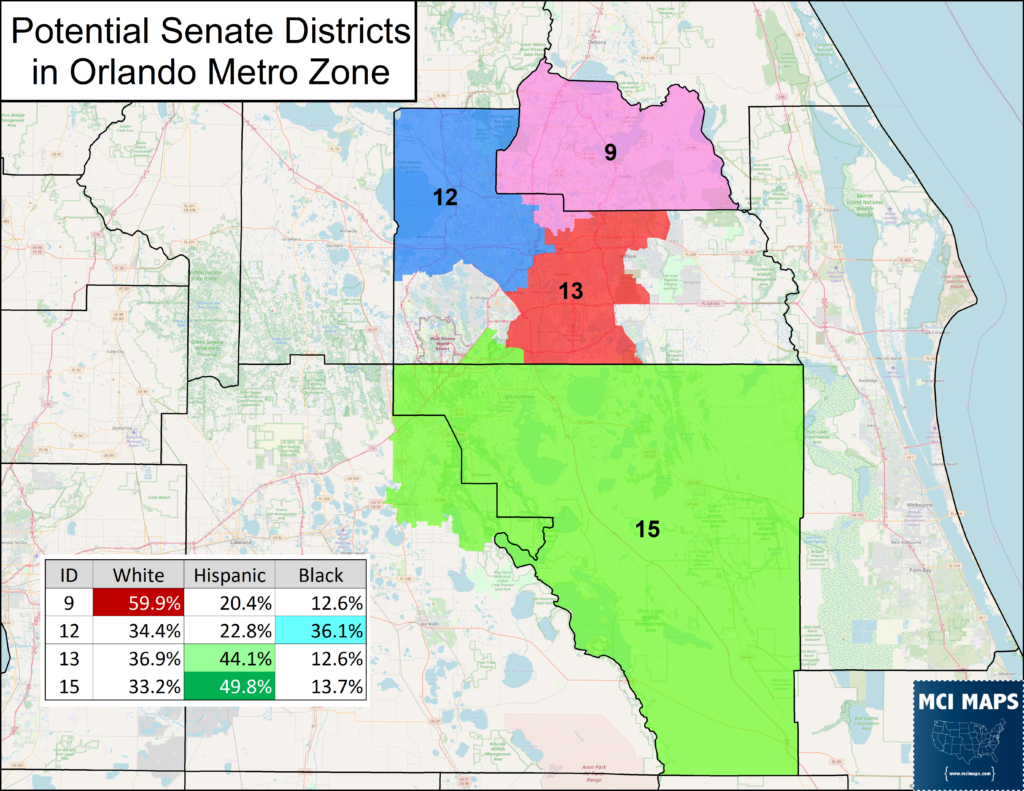
The biggest drawback to this plan is that it means Orange would have to be divided on both its east and west sides by other districts. That trade-off does yield a Hispanic-plurality seat. Whether map-drawers want to make that tradeoff (and what locals think of the idea) – remains to be seen.
GOP Efforts to save SD9
When it comes to possible partisan shenanigans – the focus is no-doubt going to be on SD9. The Seminole-Volusia district narrowly voted for Biden in 2020 while narrowly voting for GOP candidate Jason Brodeur. This was a multi-million dollar race that has remained in the press as an investigation continues into dark-money funding of a third-party candidate.
So with redistricting coming up, its very likely Republicans will want to shore-up their hold on the seat. With Seminole County trending blue – one obvious course would be to divide the county. This would be a fairly blatant partisan move – directly defying Fair Districts. If they take that course of action – it means they are going for an aggressive gerrymander of the map. I think a more likely scenario is to maintain a Seminole-Volusia dynamic.
This district would be Trump +0.5%; compared with Biden +4.3% my proposal has.
Republicans would no doubt claim my plan moving SD7 into Orange is partisan in its own right. My argument is pretty straight forward; going to Orange makes more sense based on the new data. In 2015, there was no room in Orange for SD9. Now, Orange has an abundance of room. On top of this, the border of Orange and Seminole blurs – with voters tensely packed along it and not regarding the divide as culturally important. Seminole and Orange currently have far more in common than Seminole and Volusia. Mimicking the current CD7 dynamic, which itself was drawn by Republicans in 2015, just makes sense.
SD9 is likely to be the major source of debate. Republicans have little else they can do in the area to improve their standing. Districts 15, 11, and 13 are overwhelming Democratic. SD13 was a former swing seat, but now the region is so Democratic and dense that its very hard to draw only two Democrats seats. In this hypothetical below, I was able to reduce 13 to a narrow Biden +1 seat.
I also offered an alternative version of Republican efforts to shore-up SD9. I highly doubt this map will occur (and if it does then all bets are off). Rather this highlights how dense and Democratic the area is.
In reality, I expect SD9 to be the only major partisan focal-point.
Looking Ahead
The Orlando area has seen some major growth over the last decade. Next week, we look ahead at the Tampa Bay region and the dynamic of the under-populated Pinellas linked with the over-populated Hillsborough.

